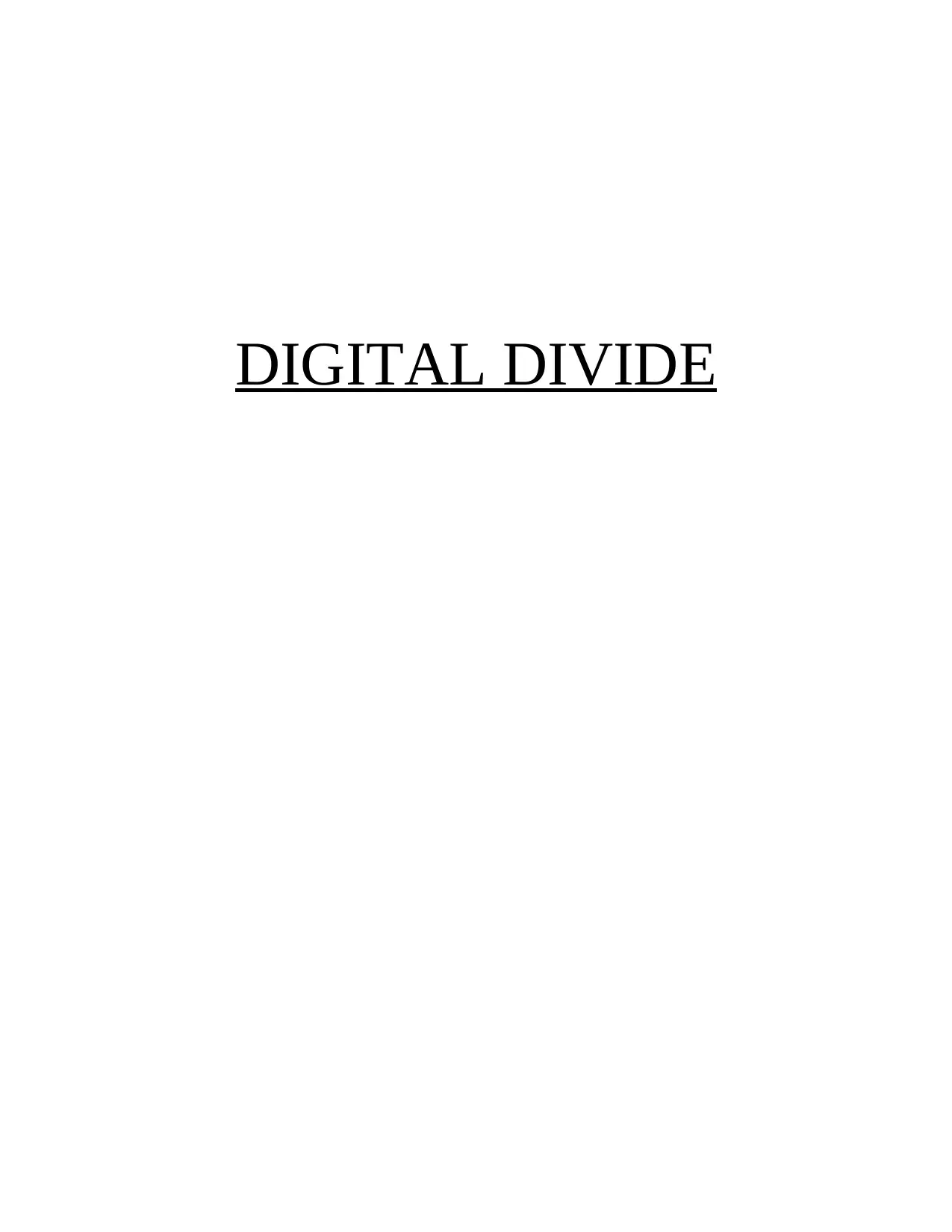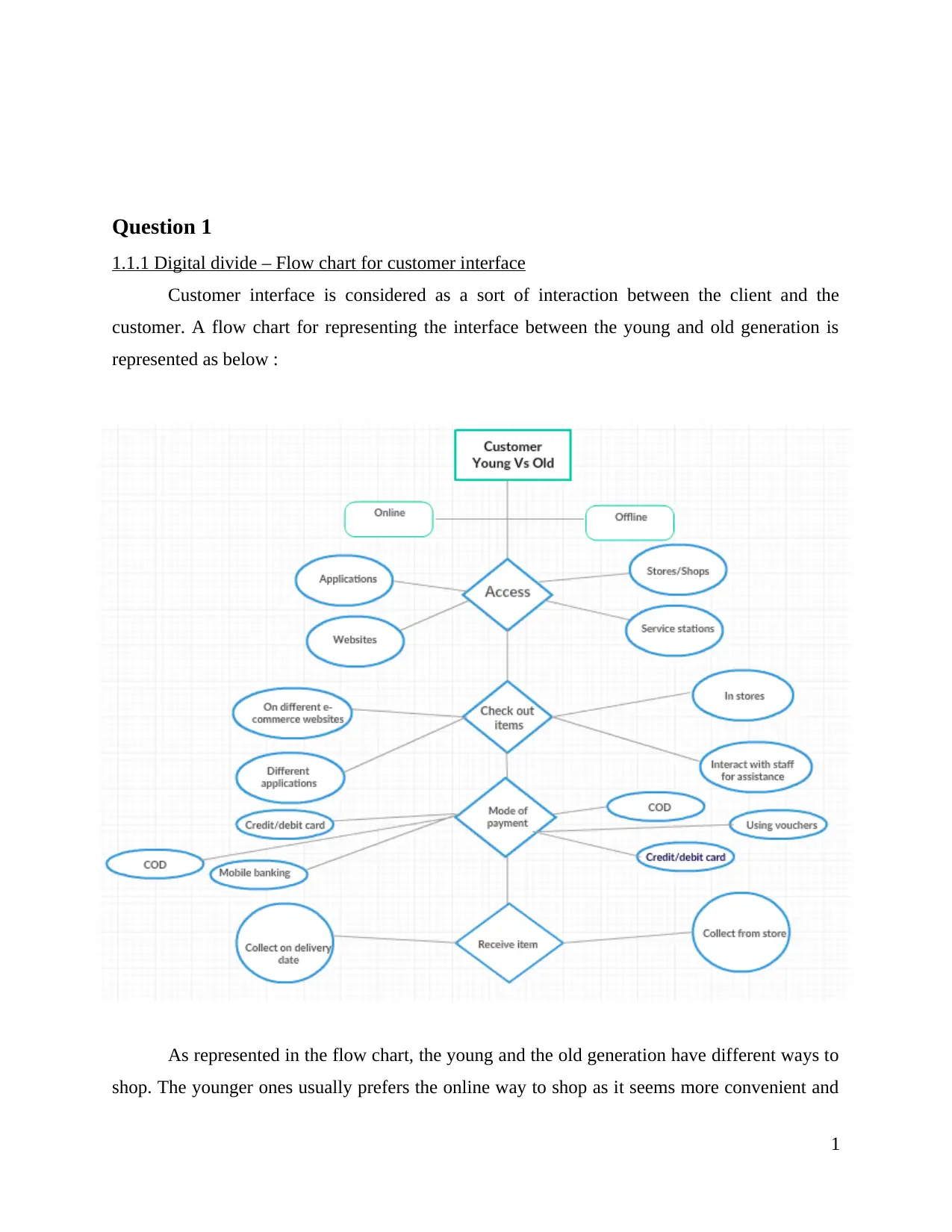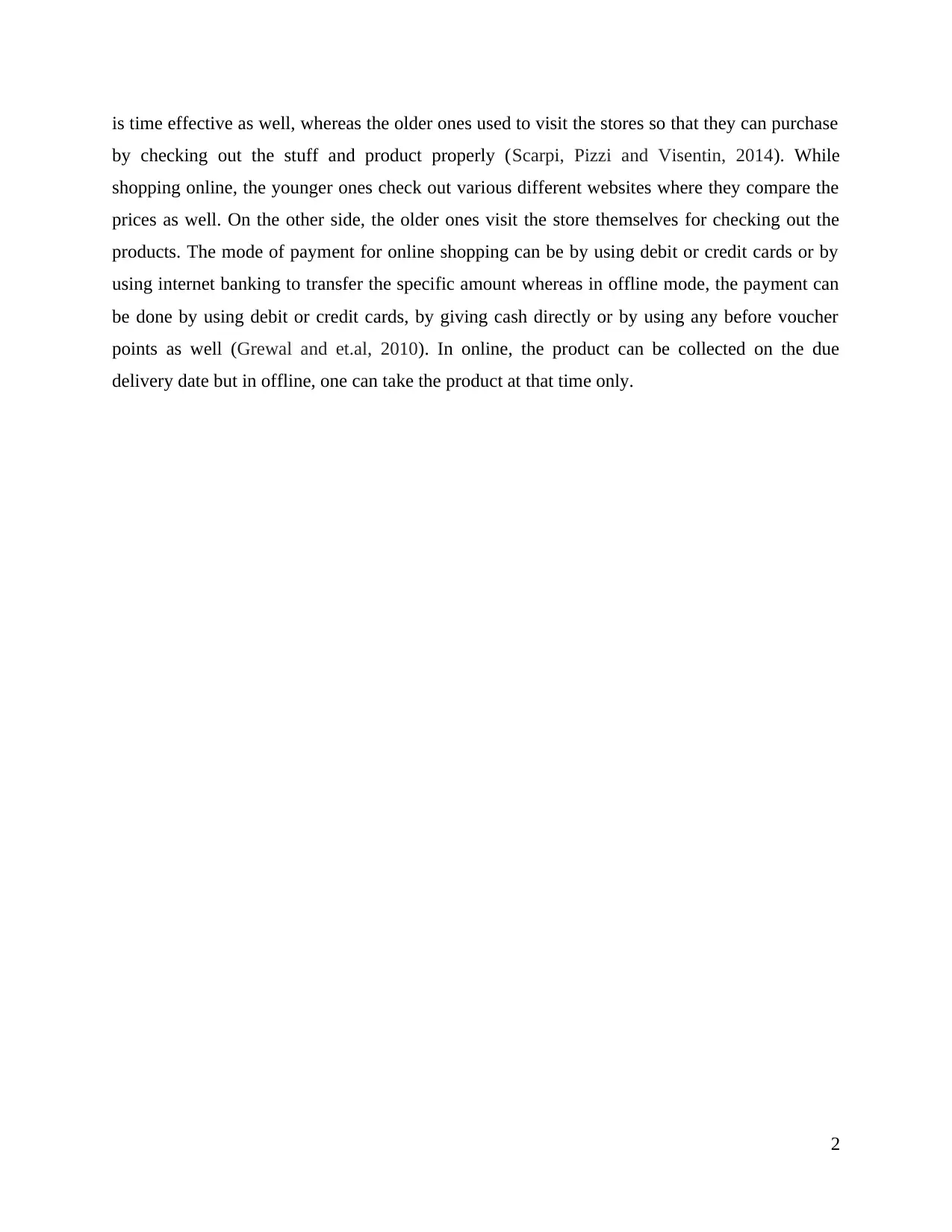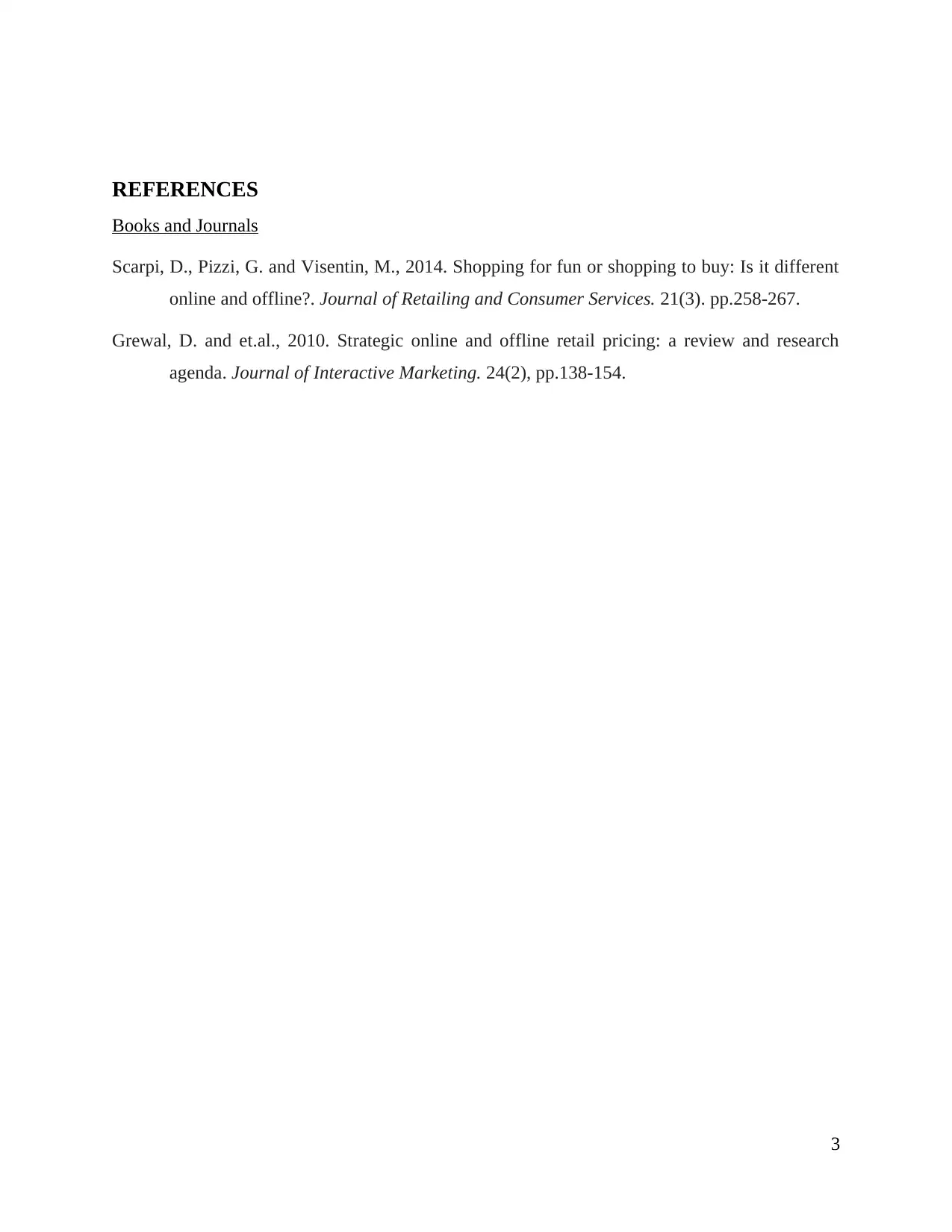Digital Divide: Customer Interface Analysis, Flowchart, and Report
VerifiedAdded on 2020/06/06
|5
|349
|73
Report
AI Summary
This report delves into the digital divide, focusing on the customer interface and its impact on shopping behaviors. The assignment provides a flowchart that illustrates the differences between online and offline shopping, particularly highlighting the contrasting preferences of younger and older generations. The younger generation often opts for online shopping due to its convenience and efficiency, utilizing various websites for price comparisons, while the older generation tends to prefer in-store purchases to physically examine products. The payment methods also vary, with online transactions employing credit/debit cards or internet banking, and offline transactions allowing cash, cards, or vouchers. The report references key sources such as Scarpi, Pizzi, and Visentin (2014) and Grewal et al. (2010), which are used to validate the findings. This report offers valuable insights into the evolving landscape of consumer behavior in the digital age, showcasing the impact of technology on customer interactions and shopping experiences.
1 out of 5






![[object Object]](/_next/static/media/star-bottom.7253800d.svg)